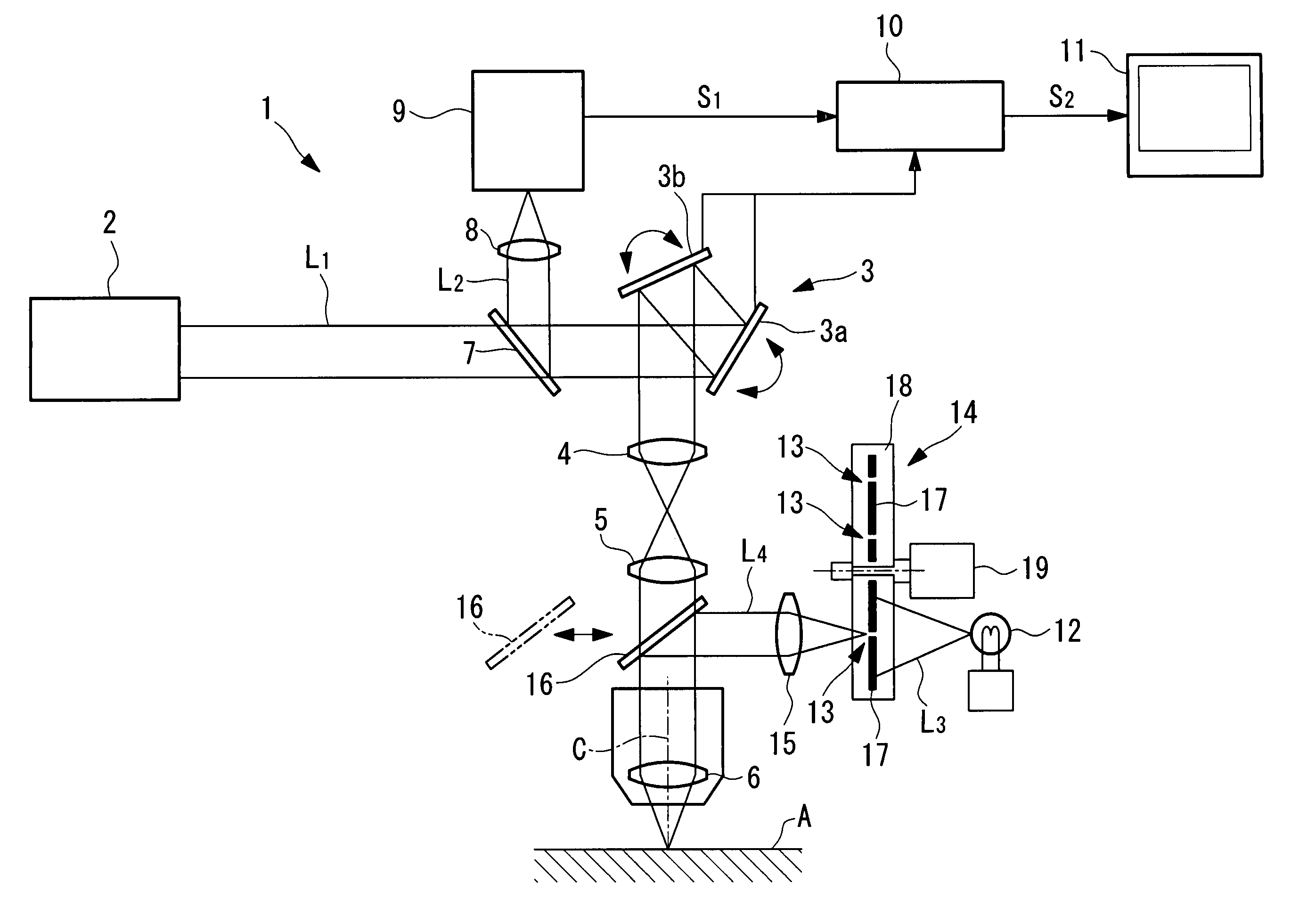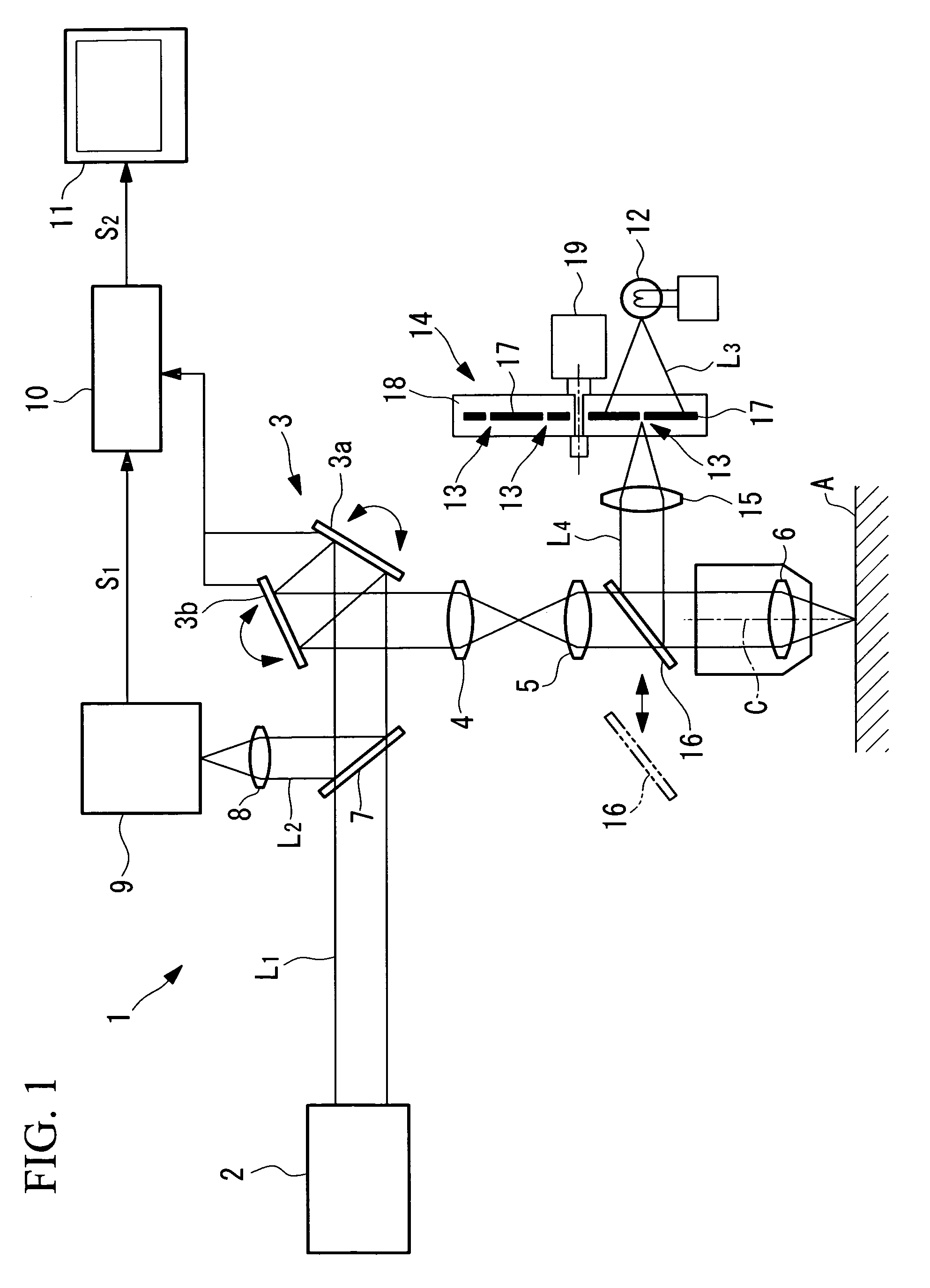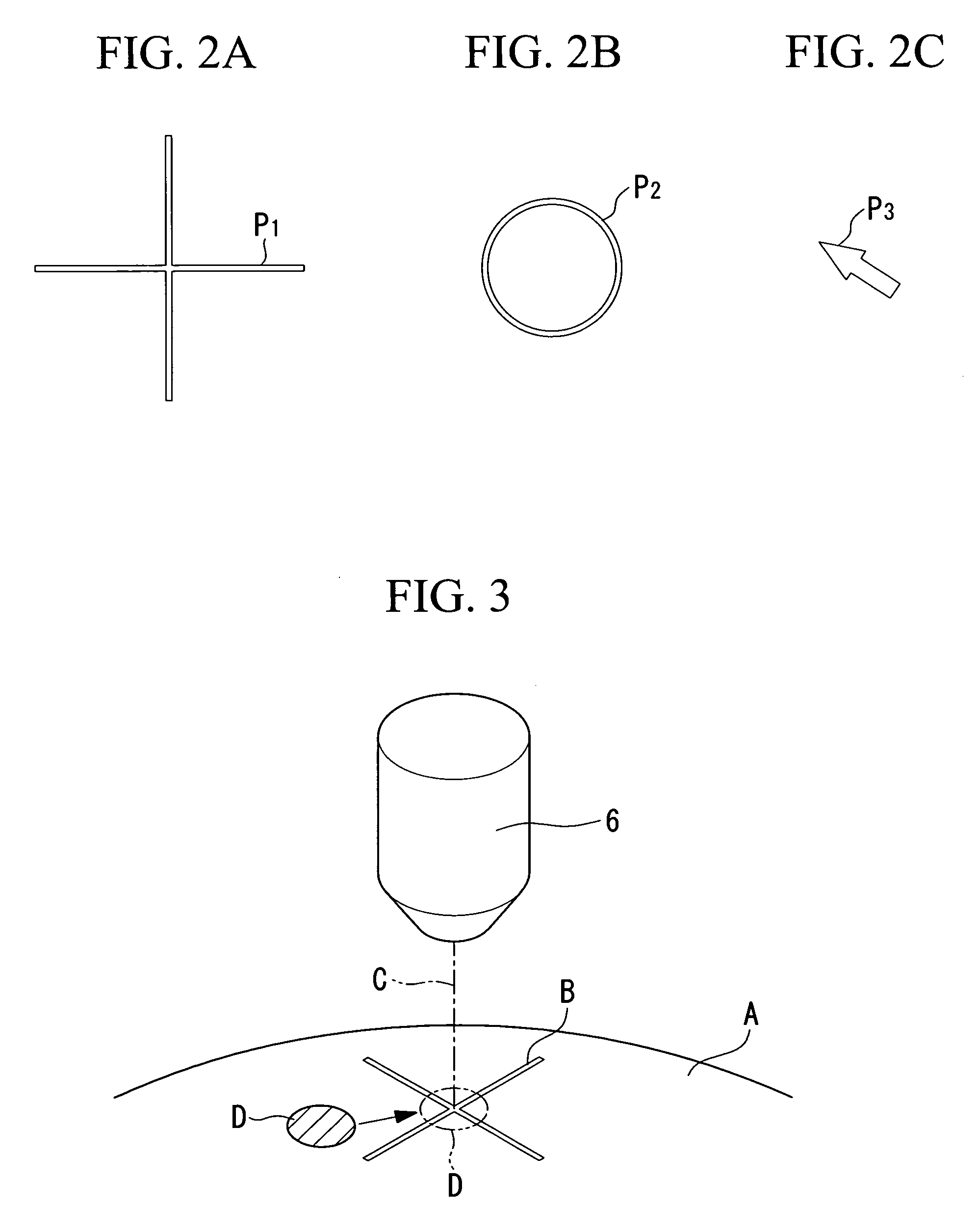Scanning examination apparatus, lens unit, and objective-lens adaptor
a scanning examination and lens unit technology, applied in the field of scanning examination apparatus, can solve the problems of difficult to determine the optical axis position of the objective lens from the light spot, difficult to align the position of the optical axis of the objective lens and the site to be examined on the specimen, and difficult to determine the optical axis position of the objective lens. the effect of quick and easy confirmation of the optical axis position, quick and easy positioning of the objective lens
- Summary
- Abstract
- Description
- Claims
- Application Information
AI Technical Summary
Benefits of technology
Problems solved by technology
Method used
Image
Examples
first embodiment
[0063]A scanning examination apparatus 1 according to the present invention will be described below with reference to FIGS. 1 to 3.
[0064]As shown in FIG. 1, the scanning examination apparatus 1 according to this embodiment, which is a laser-scanning fluorescence microscope apparatus, includes a laser light source (first light source) 2 for emitting laser light L1; a scanner (light scanning unit) 3 for two-dimensionally scanning the laser light L1 emitted from the laser light source 2; a pupil-projection lens 4 for focusing the laser light L1 scanned by the scanner 3 to form an intermediate image; an image-forming lens 5 for collecting the laser light L1 forming the intermediate image and converting it to a substantially collimated beam; and an objective lens 6 for re-imaging the laser light L1 collected by the image-forming lens 5 at a specimen A.
[0065]The scanner 3 is formed of so-called proximity galvanometer mirrors in which galvanometer mirrors 3a and 3b, which are provided so a...
second embodiment
[0088]Next, a scanning examination apparatus 20 according to the present invention will be described below with reference to FIGS. 4 and 5.
[0089]In the description of this embodiment, parts having the same configuration as those in the scanning examination apparatus 1 according to the first embodiment described above are assigned the same reference numerals, and a description thereof shall be omitted.
[0090]The scanning examination apparatus 20 according to this embodiment differs from the first embodiment in that, instead of the mirror 16 in the scanning examination apparatus 1 according to the first embodiment, a half-mirror 21 is permanently disposed between the image-forming lens 5 and the objective lens 6, as shown in FIG. 4.
[0091]The operation of the scanning examination apparatus 20 according to this embodiment, having such a configuration, will be described below.
[0092]With the scanning examination apparatus 20 according to this embodiment, during a preparation stage, when th...
third embodiment
[0100]Next, a scanning examination apparatus according to the present invention will be described below with reference to FIGS. 6 and 7.
[0101]The scanning examination apparatus according to this embodiment is a microscope apparatus including the structure of the scanning examination apparatus 1 described in the first embodiment.
[0102]More specifically, the scanning examination apparatus of this embodiment includes an examination apparatus main body (not shown in the drawings) and a microscope objective lens unit 101 (see FIG. 6) that is removably attached to the examination apparatus main body.
[0103]As shown in FIG. 6, the microscope objective lens unit 101 includes an infinity optical lens group 102 (objective lens 6) formed of a plurality of lenses, a lens barrel 103 for accommodating the infinity optical lens group 102, and a pointed insertion member 104 disposed at the end of the lens barrel 103. The lens barrel 103 is provided with a threaded mount 105 for removably attaching t...
PUM
 Login to view more
Login to view more Abstract
Description
Claims
Application Information
 Login to view more
Login to view more - R&D Engineer
- R&D Manager
- IP Professional
- Industry Leading Data Capabilities
- Powerful AI technology
- Patent DNA Extraction
Browse by: Latest US Patents, China's latest patents, Technical Efficacy Thesaurus, Application Domain, Technology Topic.
© 2024 PatSnap. All rights reserved.Legal|Privacy policy|Modern Slavery Act Transparency Statement|Sitemap



